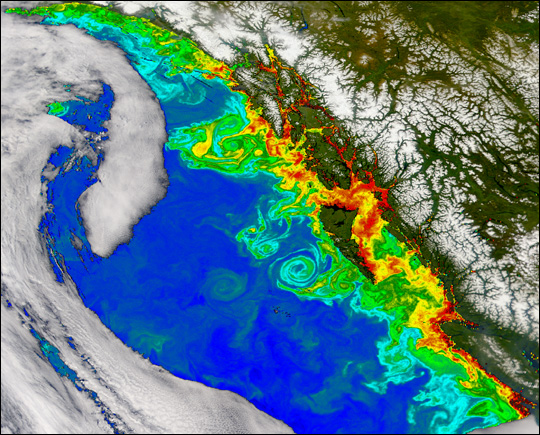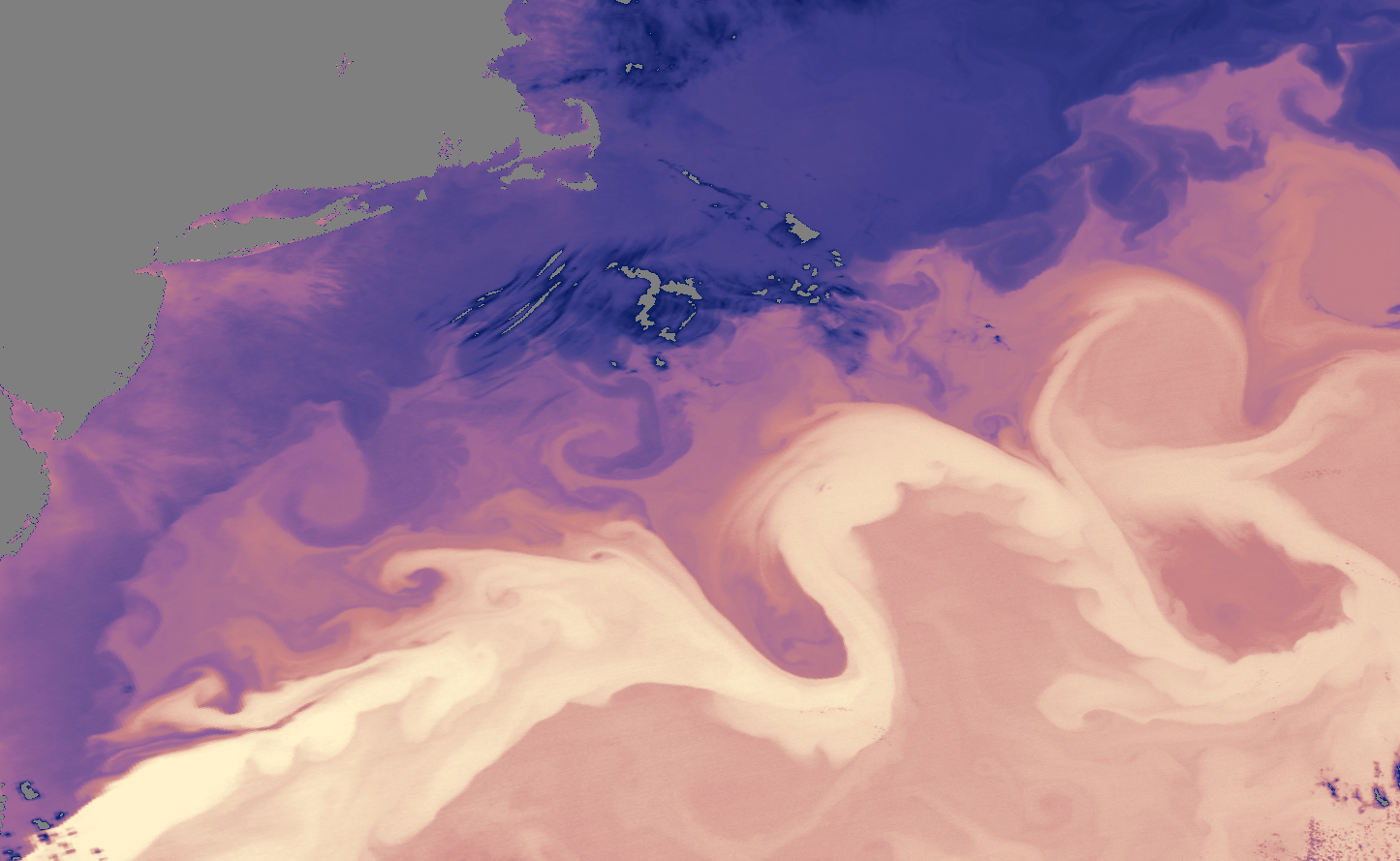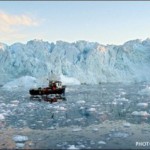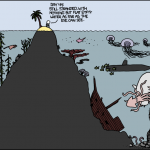I recently found this post of the mean surface currents in the North Atlantic Ocean by @oceanCO2. And for some reason I couldn’t get over all the squiggles. They are gorgeous. A amazing illustration of how dynamic the ocean surface is. And the cause of all those squiggles? Eddies.
Eddies are everywhere in the ocean. These swirling vortices of ocean fun can be seen all over this mind-blowing NOAA animation Perpetual Ocean. Eddies are not only the supermodels of ocean imagery, but they also have an important role in the ocean, transporting water, heat, plankton and nutrients.

Some of the most recognizable eddies are those formed by the Gulf Stream, a giant fire hose of warm water that streams up the eastern side of the Atlantic Ocean. Sometimes, it’s meandering back and forth, the Gulf Stream gets kinky. So kinky it forms loops throwing frisbees of salty warm water to the north or fresh cold water to the south. These eddies are also travelling alien ecosystems, carrying along whichever sea beasties were too powerless too swim out of the twirling currents.

Phytoplankton get caught up in all sorts of eddies. Those little green goobers are what enable us to see eddies from space with the naked eye! But it’s not by accident where there are eddies there are phytoplankton. Eddies control whether or not phytoplankton blooms occur by providing nutrients or keeping them afloat so they can get more sun.
Also gotta give a shoutout to the eddies of the poles. These Arctic and Antarctic eddies spin sea ice into glorious whorls.

But the eddies you can see from space aren’t the only story. We’ve only talked about the biggest ones that are several hundreds of kilometers wide and may live for several months. Eddies can be very, very small (down to the centimeter scale) and only last for several minutes. There are eddies underneath the surface of the ocean. There are deep eddies are currents flow over bumps in the ocean. Basically, the ocean is full of eddies.






If someone was to receive funding to study them, would that be an Eddy Grant? (sorry… I had to)
Dr. Martini, you and the other scientists here may find this new article to be interesting:
http://www.sciencedaily.com/releases/2012/09/120923141212.htm